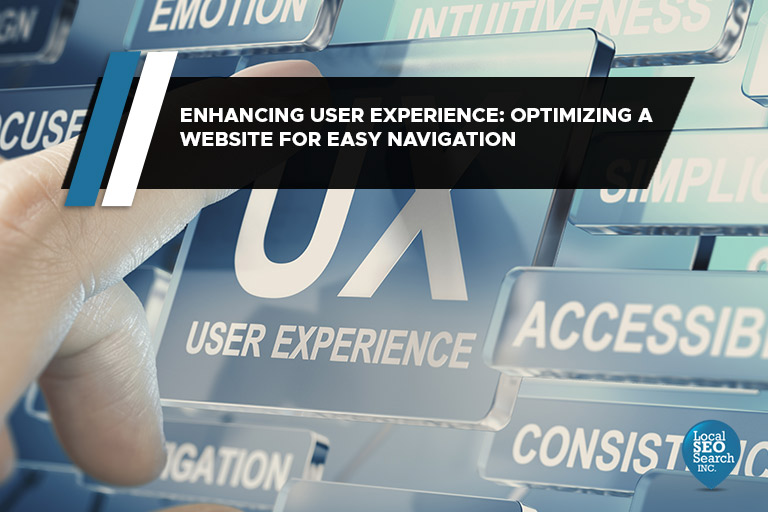0/5
(0 Reviews)


Providing a seamless user experience on your business website is crucial for success. One of the key aspects of enhancing user experience is optimizing your website for easy navigation. Understanding user expectations and streamlining your website’s navigation structure can create a user-friendly environment that keeps visitors engaged and satisfied.
Here are some tips on how to enhance user experience and optimize your website for easy navigation:
To optimize your website for easy navigation, it is essential to understand your users’ needs and preferences. Analyzing user behaviour, collecting feedback, and conducting research can provide valuable insights into how users interact with your website. You can better tailor your navigation to meet their needs by identifying common pain points and understanding user expectations.
A cluttered and confusing navigation structure can significantly hinder a positive user experience. By simplifying your website’s navigation, you make it easier for visitors to find the information they seek. Clear and intuitive menu design, organized content categories, and the use of breadcrumbs can all contribute to a more user-friendly navigation experience.
In optimizing navigation, it’s important to be aware of common website mistakes that can hinder user experience. Some common pitfalls include:
Effective search functionality is essential for websites with a large amount of content. Users can quickly find the needed information if you incorporate a prominent search bar, optimize search algorithms, and provide relevant filters and options. This feature saves time and enhances the overall user experience on your website.

Web design is crucial in shaping website navigation and ultimately influencing user experience. It encompasses the visual aesthetics, layout, and overall structure of a website, all of which directly impact how users interact with the site.
Let’s explore how web design elements influence website navigation and user experience.
A well-designed website establishes a clear visual hierarchy, guiding users’ attention to the most important elements. Through the strategic use of typography, colours, and spacing, web designers can prioritize key content and make it easily discoverable. By implementing a strong visual hierarchy, users can easily identify important information and navigate through the site.
Web design shapes the layout and functionality of navigation menus, making them intuitive and user-friendly. Clear and concise menu labels, well-organized categories, and logical submenus provide an efficient and seamless navigation experience. Users should be able to locate the desired information effortlessly, reducing frustration and encouraging engagement.
As mobile device usage continues to surge, responsive web design is necessary to ensure optimal user experience across different screen sizes. Responsive design ensures websites adapt and display correctly across various screen sizes and devices. By providing a consistent user experience across desktops, tablets, and smartphones, web design optimizes navigation for users on different platforms, enhancing their overall experience.
Consistency in web design elements, such as the placement of navigation menus, branding elements, and interaction patterns, establishes familiarity for users. Users can navigate through a website more efficiently when they can predict where to find certain features based on their prior experiences. Consistency in design enhances usability, reduces cognitive load, and contributes to a positive user experience.
Effective web design strategically places call-to-action (CTA) buttons and links to guide users towards desired actions. Whether making a purchase, signing up for a newsletter, or filling out a contact form, well-designed CTAs prompt users to take action. By placing CTAs in prominent and visually appealing locations, web designers can increase user engagement and conversion rates.
Web design influences page load speed, a crucial factor in user experience. Users get frustrated and bounce off websites that load slowly, resulting in higher bounce rates. A trusted web design agency in Toronto can create fast-loading websites that keep users engaged and satisfied by optimizing images, utilizing efficient coding practices, and minimizing unnecessary elements.
Web design also plays a significant role in ensuring website accessibility for users with disabilities. Designing with accessibility in mind involves considering factors such as colour contrast, text size, and keyboard navigation. By adhering to accessibility standards, web designers create inclusive experiences that accommodate a broader range of users.

Prioritizing user experience not only keeps your audience engaged but also contributes to improved conversion rates and customer satisfaction. Remember, a well-optimized website is a foundation for successful online interactions and business growth.
At Local SEO Search, we ensure that your website is optimized for easy navigation and ranks well in local search results. Get in touch with our web design team.
Contact us today to learn how we can boost your online presence and drive more traffic to your business.
